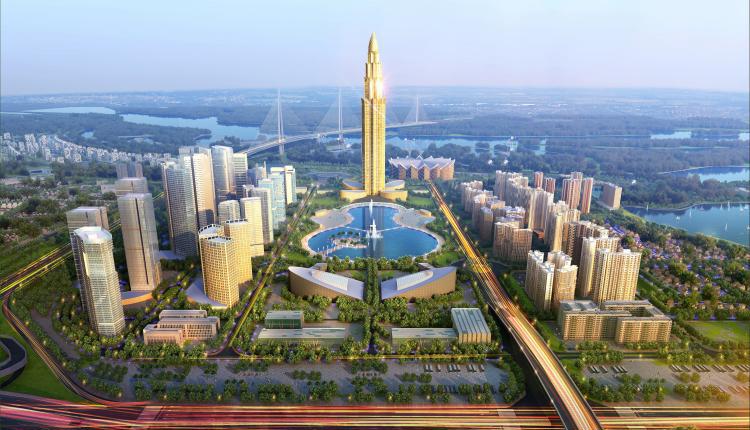
Hanoi’s authorities have set the target to build two or three new urban areas with the criteria of a smart city for the period of 2025-2030, with a vision to have three or five urban areas of Southeast Asian and world-class quality.
The move is one of the targets of Plan No.246 /KH-UBND recently issued by the People's Committee of Hanoi to implement the Action Program on planning, construction, management and sustainable urban development in the city until 2030, vision to 2045.
Under the action plan, the urbanization rate is expected to reach about 60-62% by 2025 and 65-75% by 2030. The ratio of urban construction land to the total natural land area will reach about 30% by 2025 and 33-36% by 2030.
Hanoi strives for the ratio of urban traffic land (including static traffic) on urban construction land by 2025 to reach 12-15% and 15-20% by 2030. The rate of public passenger transport will reach about 30-35% by 2025 and 45-50% by 2030.
The average green tree area per urban dweller will reach about 7.8-8.1 square meters per person by 2025 and around 12-14m2/person by 2030. The residential floor area per capita in urban areas will reach 31m2/person by 2025, and 33m2/person by 2030.
The perspective of the North Hanoi Smart City project. Photo: BRG |
Besides, more hospitals will be renovated, upgraded and built to fulfill the target of 30-35 beds/ten thousand patients by 2025 and ensure human resources and medical staff for the hospitals. The number of public high schools will increase to about 150 by 2030.
The municipal government set the target that the growth rate of GRDP in the period of 2021-2025 to be higher than that of the whole country, GRDP in the period 2026-2030 will increase by 8.0-8.5% per year: GRDP per capita will reach US$12,000-13,000.
Moreover, fiber optic broadband network infrastructure will cover over 80% of households in urban areas by 2025, universalizing 4G, 5G mobile network services and smartphones. By universalizing fiber optic broadband Internet services and accessing 5G mobile network services, the percentage of the adult population in urban areas with electronic payment accounts will reach 100%.
Hanoi will fulfill the targets in line with the urban development project to respond to climate change in 2021-2030 and the program to build a new countryside in 2021-2025.
Regarding the vision for 2045 and 2050, the Hanoi People's Committee noted that specific targets will be further studied and determined during the research phase of the Hanoi Capital Planning for the 2021-2030 period with a vision of 2050. The general planning of Hanoi capital to 2045, a vision to 2065 and the urban development program of the city are reviewed and approved by the competent authorities by regulations.
The municipal People's Committee has requested the city's departments, agencies, and the People's Committees of districts to develop a separate plan for effective implementation.
According to the Politburo’s Resolution 15/NQ-TW issued by the Vietnamese Government in August 2022, Hanoi is designated to become a center and development hub for the Red River Delta and a key economic region of the north, with high regional and international competitiveness by 2030.
To fulfill the target, the resolution puts forwards some key tasks and solutions, including raising awareness of the significant position, role and importance of the capital city; and developing the capital’s economy rapidly and sustainably based on restructuring the economy, renewing growth models and mobilizing all resources effectively.
Other tasks include improving the quality of planning and promoting the construction of infrastructure, urban development and management. Moreover, effective use of natural resources and environmental protection are key ones.






- Hanoi approves urban development program until 2035
- Vietnam leads Thailand in 2024 AFF Cup final first leg
- "Bright - Green - Clean - Beautiful" movement engages Hanoi residents
- Hanoi sees record visits during 2025 New Year holiday
- Hanoi lights up with spectacular fireworks to welcome 2025
- Hanoi streets come alive on New Year’s Eve

